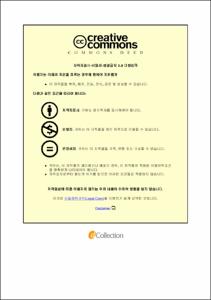고등어, 삼치, 전갱이를 활용한 연육의 개발 및 특성 비교
- Alternative Title
- The Study on Development and Quality Properties of Surimi using Muscle of Mackerel Scomber japonicas, Japanese Spanish mackerel Scomberomorus niphonius, and Jack mackerel Trachurus japonicus
- Abstract
- Surimi is a Japanese term for deboned, minced, and washed fish flesh, which is then used for the manufacture of seafood imitation products such as crab legs and fish cake. These are perceived to have wholesome and nutritious attributes, which, together with an affordable price, have contributed to the increasing worldwide consumption of surimi-based products. However, whereas the demand for fish is increasing, it is clear that its availability is decreasing, particularly for some fisheries.
Several whitefish species have been mentioned as preferred species for surimi manufacturing. However, it is necessary to take advantage of the availability of alternative resources for surimi production, such as small fatty pelagic fish.
They are harvested as by-catch of other species, but to a degree remain unused because only low-quality surimi is obtained from them, or they are utilized for low-priced products. Problems with the rapid deterioration of fish quality, color, small size, fishy odor, and flavor, low muscle pH, high fat content, and high concentration of sarcoplasmic protein occur, and therefore the gelation process could be affected to a degree that would limit their utilization in surimi production.
Therefore, the purpose of this study is development and quality properties of surimi using dark-fleshed muscle of mackerel Scomber japonicas, Japanese Spanish mackerel Scomberomorus niphonius, and Jack mackerel Trachurus japonicus.
We were chosen raw materials for preparing surimi considering raw material supply reliability and the price competitiveness according to sales record of Busan Cooperative Fish Market for 3 years (2014-2016).
The investigation were 20 species including horse mackerel, Japanese Spanish mackerel and mackerel. The three, Japanese Spanish mackerel, mackerel, horse mackerel, of these species are continuously treated, and considering the price of each month for three years, as surimi made the fish as possible.
The composition of dark muscle is the major problem when incorporated into surimi, mainly because besides its higher lipid content and susceptibility to oxidize. They may not have a negative effect on the color and gel forming ability of surimi made from dark flesh meat. The optimal mixture ratio for prepared surimi was 1: 9 (threadfin bream (Itoyori)/Japanese Spanish mackerel), 1:9 (threadfin bream (Itoyori)/jack mackerel) and 7:3, 9:1 (threadfin bream (Itoyori)/mackerel).
The effects of dark-flesh fishes on the qualify of fried fish cake were investigated. Quality attributes including acid value, volatile basic nitrogen, color value, viable cell count and sensory evaluation were analyzed. There was no significantly of acid value and pH for 5 samples. Increasing the amount of dark-flesh muscle, volatile basic nitrogen value and L-value of fried fish paste tended to decreased. In sensory evaluation, the higher amount of dark-flesh muscle obtained higher favorite score in flavor and taste, and all samples had the best score in overall acceptance. These results suggest that dark-flesh fishes can be applied to fried fish cake for the purpose of high taste and functionality. To develop for the shelf-life of fish cake prepared 5 fish pastes, fish cake was stored at 5, 10, and 15℃ and populations of total aerobic bacteria were determined during storage for 15 days. The shelf-life values for fish cake used in this study were 12〜13, 10 and 8〜9 days at 5, 10, and 15℃, respectively. The change in the quality index of fried fish cake, 5 samples made the dark-flesh fishes were found to be the same as fish cake prepared several whitefish species.
The results of this study indicate that dark-flesh fish can be readily used as a raw material for preparing simple, relatively inexpensive fish pastes. The fish cake made dark flesh fish offers great potential as a local specialization product on the basis of cost and excellent functional properties.
- Issued Date
- 2017
- Awarded Date
- 2017. 8
- Type
- Dissertation
- Keyword
- Surimi Mackerel Scomber japonicas Japanese Spanish mackerel Scomberomorus niphonius Jack mackerel Trachurus japonicus
- Publisher
- 부경대학교
- Alternative Author(s)
- Park Dae-Chan
- Affiliation
- 부경대학교 대학원
- Department
- 대학원 식품공학과
- Advisor
- 조영제
- Table Of Contents
- Abstract ⅲ
서 론 1
재료 및 방법 5
1. 실험재료 5
1. 1. 동결연육 5
1. 2. 원료어 5
1. 3. 연육 제조 5
1. 4. 튀김어묵제조 6
2. 실험방법 8
2. 1. 일반성분 및 pH 8
2. 2. 성상 8
2. 3. 물성측정 8
2. 4. 색도측정 8
2. 5. 휘발성염기질소(volatile basic nitrogen, VBN) 함량 9
2. 6. 산가(acid value, AV) 9
2. 7. 일반세균수 9
2. 8. 관능평가 10
2. 9. 통계처리 10
결과 및 고찰 11
1. 새로운 어묵원료 선정 11
1. 1. 공급안전성 11
1. 2. 원료 특성 11
1. 3. 일반성분 함량 비교 11
2. 연육 제조 및 특성비교 16
2. 1. 물성 및 pH 비교 16
2. 2. 색도 비교 16
2. 3. 관능평가 비교 16
3. 최적 어묵 제조 배합비 22
3. 1. 물성비교 22
3. 2. 색도 비교 23
4. 최적 배합연육을 이용한 어묵 제조 및 유통기한 설정 29
4. 1. 최적 배합연육을 이용한 어묵 품질변화 29
4. 2. 품질지표를 이용한 어묵의 유통기한 산출 38
요 약 41
참 고 문 헌 43
감사의 글 48
- Degree
- Master
- Files in This Item:
-
-
Download
 고등어, 삼치, 전갱이를 활용한 연육의 개발 및 특성 비교.pdf
기타 데이터 / 530.03 kB / Adobe PDF
고등어, 삼치, 전갱이를 활용한 연육의 개발 및 특성 비교.pdf
기타 데이터 / 530.03 kB / Adobe PDF
-
Items in Repository are protected by copyright, with all rights reserved, unless otherwise indicated.